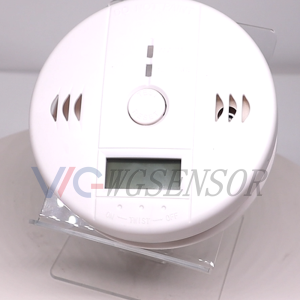Carbon monoxide (CO) is a colorless, odorless gas that can pose severe health risks when inhaled. The dangers of carbon monoxide poisoning are significant and often overlooked due to its invisible nature. Here’s a comprehensive overview of its hazards, preventive measures, and detection methods:
Hazards of Carbon Monoxide Poisoning:
Health Impacts:
– Health Risks: CO interferes with the body’s ability to carry oxygen, leading to tissue damage and potentially fatal consequences.
– Symptoms: Initial symptoms include headache, dizziness, nausea, confusion, and weakness. Prolonged exposure can cause unconsciousness and death.
– Long-term Effects: Chronic exposure may lead to neurological complications, heart problems, and other severe health issues.
Sources of Carbon Monoxide:
– Combustion Appliances: Furnaces, stoves, gas ranges, water heaters, and fireplaces are common sources.
– Vehicle Exhaust: Running a car in an enclosed space, such as a garage, can also generate lethal CO levels.
Prevention of Carbon Monoxide Poisoning:
Installation and Maintenance:
– Proper Ventilation: Ensure adequate ventilation for fuel-burning appliances and regular chimney and flue maintenance.
– Carbon Monoxide Detectors: Install CO detectors on every floor of your home, especially near sleeping areas.
– Professional Inspection: Regularly service and inspect heating systems, chimneys, and other combustion devices.
Safety Measures:
– Never Use Generators Indoors: Keep generators, charcoal grills, and other combustion sources outside, away from doors and windows.
– Ventilation for Vehicles: Avoid idling vehicles in closed garages, even with open garage doors.
– Awareness and Education: Educate yourself and family members about the risks and symptoms of CO poisoning.
Detection of Carbon Monoxide:
Carbon Monoxide Detectors:
– Function: CO detectors sound an alarm when they sense elevated levels of carbon monoxide in the air.
– Placement: Install detectors at knee level or lower, following manufacturer’s guidelines for optimal placement.
– Testing and Maintenance: Regularly test detectors and replace batteries as needed. Replace detectors according to the manufacturer’s recommendations.
Professional Services:
– Inspections: Engage professionals to inspect and service heating systems, chimneys, and other potential sources of CO emission.
– Emergency Response: In case of suspected CO exposure, evacuate the area immediately and seek medical attention.
Carbon monoxide poisoning is preventable through awareness, proper installation of detectors, and regular maintenance of fuel-burning appliances. Being proactive in safeguarding against CO exposure is crucial for maintaining a safe and healthy environment for you and your loved ones.


Please contact us for free quotation by form below. We promise the quickest response within 24 hours: